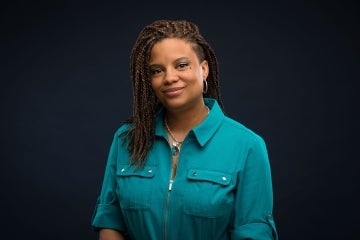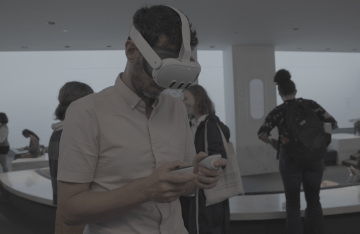Black and Hispanic Teens See Risky Behaviors on Social Media, but Few Actually Post about Them.
A new study from alum Robin Stevens and researcher Amy Bleakley surveyed youth about their social media experiences.

Getting teenagers to talk with adults about sex and drugs and social media is never an easy ask. But on one chilly evening in the common room of the W.E.B. Du Bois College House at the University of Pennsylvania, a dozen Philadelphia high school students openly shared their thoughts on the subjects.
“You’re almost brainwashed to believe things are a certain way,” said one boy, to a smaller breakout group.
“You can’t depend on other people sometimes,” said a girl sitting across from him.

At the event, funded by a Campaign for Community Grant and supported by Penn Women’s Center, students discussed access to drugs and sexual encounters through social media, and the meanings of various innocent-seeming emojis. One particular topic — the influence of the photo-sharing site Instagram — struck particularly close to home. Earlier that day, confusion and accusations over a fake Instagram account lead to a fight and, separately, a student at their school getting physically assaulted.
“Social media has become a big deal in our society,” the first boy chimed in again, “especially at our school.”
For Penn Nursing researcher Robin Stevens, the conversations were enlightening. She had convened the teens to provide feedback and review some of her recent research, what she describes as a “gut check” on her team’s findings. But the teens’ thoughts also provided fodder for Stevens’ big-picture research.
The assistant professor of nursing runs the School’s Health Equity & Media Lab. In 2016 she coined the phrase “digital hood” to describe the connection between the negative interactions disadvantaged youth experience in their real communities and their digital ones. It’s a subject she’s been trying to better understand since.
A new paper she published in the Journal of Urban Health with colleagues Amy Bleakley and Michael Hennessy of Penn’s Annenberg School for Communication, along with Jamie Dunaev and the late Stacia Gilliard-Matthews from Rutgers University-Camden, offers some additional insight. Their survey of 145 black and Hispanic youth showed that as many as 84 percent report exposure to risk-related content on social media, yet fewer than one-fifth actually post such material.

“In other words, they’re witnessing a lot of material that might be negative,” Stevens says. “But if 80 percent of youth don’t share this type of information — salacious posts about sex or problematic drug or alcohol use — if they’re not sharing it but seeing it, does it change their perceptions of what is normative? I think it does. I think it’s making them feel like more people are sexually risky, that more are taking and selling drugs, that where they live is unsafe.”
For this study, the researchers focused on two behaviors with well-established links between exposure and an increased likelihood of engagement: substance use and unprotected sex. They also examined exposure to violence. Their aim was to understand which platforms urban minorities use and how often, as well as what type of risk-related content they see online and how they engage with it.
To get at these questions, participants completed a survey in which they answered “yes” or “no” to prompts about subjects like nudity or sexually suggestive posts and fight videos on Facebook and Instagram. From those data, the researchers concluded that although a majority of these teens view risk-related behaviors on social media, a small percentage actually participate in and post about them online.
By far, they’re exposed most to violent imagery, Stevens adds. “People may worry about nudity, but violence is the most common risk behavior they see on social media. It’s not like TV violence; it’s violence against people I know, or including people I know, or people I don’t know but who may go to high school with my friend’s cousin.”
From here, Stevens says she wants to work toward challenging the myths about what these groups believe is normal. She also hopes to improve the social media feedback loop. “Most of the critiques of these platform are around bullying and fake news and propaganda,” she says. “There’s little conversation about how this might harm children in vulnerable populations. Generally, the experiences of black and Hispanic youth online are not part of this conversation, so how are we going to empower these youth to navigate the risks they face in their digital neighborhoods?”
The teens speaking in the Du Bois College House seem poised for such empowerment. They have no qualms about discussing tough topics like rape or violence. Despite their youth, they do so eloquently.
“For the most part, people don’t give teens credit for how sophisticated they are in thinking about their world,” Stevens says. “I try not to do that. I don’t have all the answers, and I train my team to be humble and to listen because we don’t really know what people’s lives are like.” And for that matter, how much their digital lives affect what happens in real life.



